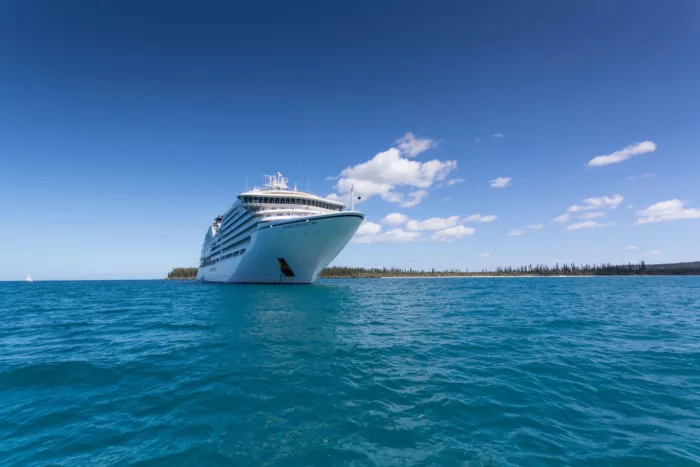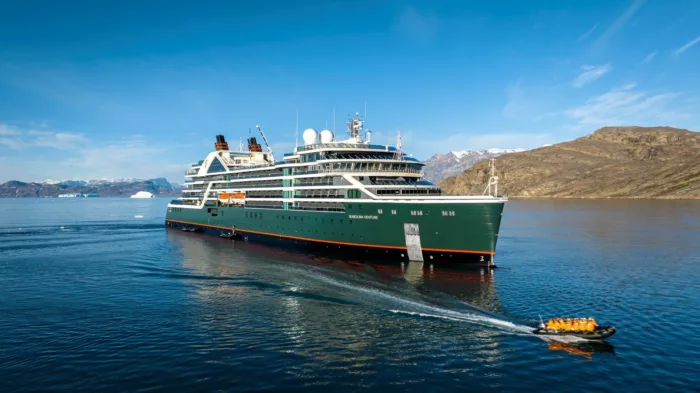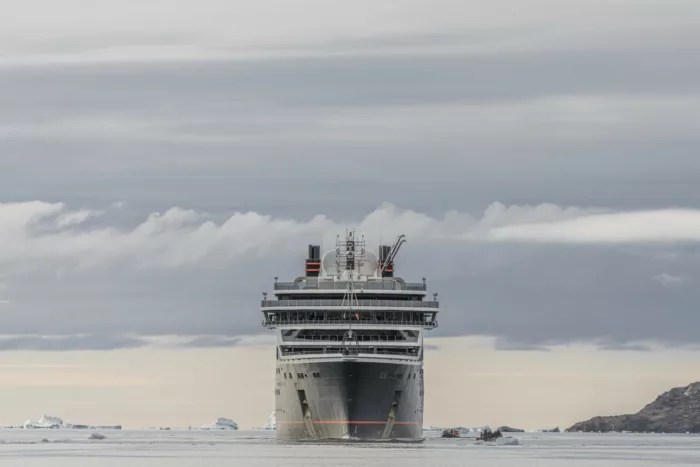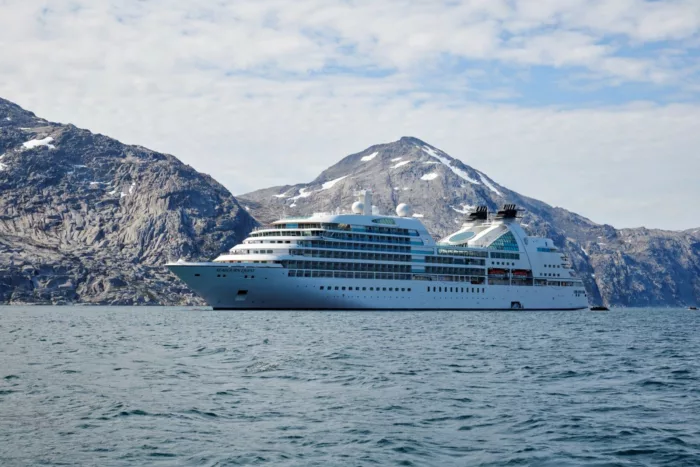
Seabourn
For decadent luxury that sails hand-in-hand with personalised experience and in-depth access to world heritage, may we introduce Seabourn Cruises.
Blending nimble power and grace with beautifully designed spaces, Seabourn ships can be likened to lavish resorts. Except, uniquely, the staff already know you just as they also remember your favourite drink.
450
Passengers
330
Crew
2010
Launched
32000t
Tonnage
198m
Length
25.6m
Width
19kts
Speed
10
Decks
USD
Currency
Cruise Itinerary
Day 1
Long Beach, California, United States
Days 2 - 7
At Sea
Relax and make the most of the myriad of facilities available on board the ship, from fantastic entertainment to delicious and diverse dining options.
Day 8
Honolulu, Hawaii, United States
Day 9
Lihue, Kauai Island, Hawaii, United States
Days 10 - 16
At Sea
Relax and make the most of the myriad of facilities available on board the ship, from fantastic entertainment to delicious and diverse dining options.
Day 17
Bora-Bora, French Polynesia
Day 18
Huahine, French Polynesia
Day 19
Papeete, Tahiti, French Polynesia
Day 20
Raiatea, French Polynesia
Days 21 - 25
At Sea
Relax and make the most of the myriad of facilities available on board the ship, from fantastic entertainment to delicious and diverse dining options.
Day 26
Suva, Fiji
Day 27
Dravuni Island, Fiji
Day 28
At Sea
Relax and make the most of the myriad of facilities available on board the ship, from fantastic entertainment to delicious and diverse dining options.
Day 29
Mystery Island (Inyeug), Vanuatu
Day 30
Easo, Lifou Island, New Caledonia
Days 31 - 33
At Sea
Relax and make the most of the myriad of facilities available on board the ship, from fantastic entertainment to delicious and diverse dining options.
Day 34
Waitangi, Bay of Islands, New Zealand
Days 35 - 36
Auckland, New Zealand
Day 37
At Sea
Relax and make the most of the myriad of facilities available on board the ship, from fantastic entertainment to delicious and diverse dining options.
Day 38
Wellington, New Zealand
Day 39
Kaikoura, New Zealand
Day 40
Christchurch, New Zealand
Day 41
Port Chalmers, New Zealand
Day 42
Oban, Scotland
Days 43 - 44
At Sea
Relax and make the most of the myriad of facilities available on board the ship, from fantastic entertainment to delicious and diverse dining options.
Day 45
Nelson, New Zealand
Days 46 - 48
At Sea
Relax and make the most of the myriad of facilities available on board the ship, from fantastic entertainment to delicious and diverse dining options.
Days 49 - 50
Sydney, New South Wales, Australia
Day 51
At Sea
Relax and make the most of the myriad of facilities available on board the ship, from fantastic entertainment to delicious and diverse dining options.
Days 52 - 53
Melbourne, Victoria, Australia
Day 54
At Sea
Relax and make the most of the myriad of facilities available on board the ship, from fantastic entertainment to delicious and diverse dining options.
Day 55
Hobart, Tasmania, Australia
Day 56
At Sea
Relax and make the most of the myriad of facilities available on board the ship, from fantastic entertainment to delicious and diverse dining options.
Day 57
Portland, Victoria, Australia
Day 58
Robe, South Australia, Australia
Day 59
Kangaroo Island, South Australia, Australia
Day 60
Adelaide, South Australia, Australia
Days 61 - 63
At Sea
Relax and make the most of the myriad of facilities available on board the ship, from fantastic entertainment to delicious and diverse dining options.
Day 64
Busselton, Western Australia, Australia
Day 65
Perth, Western Australia, Australia
Days 66 - 67
At Sea
Relax and make the most of the myriad of facilities available on board the ship, from fantastic entertainment to delicious and diverse dining options.
Day 68
Exmouth, Western Australia, Australia
Day 69
At Sea
Relax and make the most of the myriad of facilities available on board the ship, from fantastic entertainment to delicious and diverse dining options.
Day 70
Broome, Western Australia, Australia
Day 71
At Sea
Relax and make the most of the myriad of facilities available on board the ship, from fantastic entertainment to delicious and diverse dining options.
Day 72
Kuri Bay, Western Australia, Australia
Day 73
Kimberley Coast, Western Australia, Australia
Day 74
Darwin, Northern Territory, Australia
Days 75 - 76
At Sea
Relax and make the most of the myriad of facilities available on board the ship, from fantastic entertainment to delicious and diverse dining options.
Day 77
Lembar, Lombok, Indonesia
Day 78
Benoa, Bali, Indonesia
Day 79
At Sea
Relax and make the most of the myriad of facilities available on board the ship, from fantastic entertainment to delicious and diverse dining options.
Day 80
Komodo Island, Indonesia
Day 81
Ujung Kulon National Park, Indonesia
Days 82 - 84
At Sea
Relax and make the most of the myriad of facilities available on board the ship, from fantastic entertainment to delicious and diverse dining options.
Day 85
Puerto Princesa, Palawan, Philippines
Days 86 - 87
At Sea
Relax and make the most of the myriad of facilities available on board the ship, from fantastic entertainment to delicious and diverse dining options.
Days 88 - 89
Hong Kong, Hong Kong
Day 90
At Sea
Relax and make the most of the myriad of facilities available on board the ship, from fantastic entertainment to delicious and diverse dining options.
Day 91
Kaohsiung, Taiwan
Day 92
Hualien, Taiwan
Day 93
Ishigaki, Japan
Day 94
At Sea
Relax and make the most of the myriad of facilities available on board the ship, from fantastic entertainment to delicious and diverse dining options.
Day 95
Amami Ōshima, Japan
Day 96
Aburatsu, Japan
Day 97
Beppu, Kyushu Island, Oita, Japan
Days 98 - 99
Busan, South Korea
Day 100
At Sea
Relax and make the most of the myriad of facilities available on board the ship, from fantastic entertainment to delicious and diverse dining options.
Days 101 - 102
Kanazawa, Japan
Day 103
At Sea
Relax and make the most of the myriad of facilities available on board the ship, from fantastic entertainment to delicious and diverse dining options.
Day 104
Akita, Japan
Day 105
Aomori, Japan
Day 106
Miyako Islands, Japan
Day 107
At Sea
Relax and make the most of the myriad of facilities available on board the ship, from fantastic entertainment to delicious and diverse dining options.
Days 108 - 109
Tokyo, Japan
Day 110
Hitachinaka, Japan
Day 111
Sendai, Japan
Day 112
At Sea
Relax and make the most of the myriad of facilities available on board the ship, from fantastic entertainment to delicious and diverse dining options.
Day 113
Hakodate, Japan
Day 114
Kushiro, Japan
Days 115 - 122
At Sea
Relax and make the most of the myriad of facilities available on board the ship, from fantastic entertainment to delicious and diverse dining options.
Day 123
Kodiak, Alaska, Alaska
Day 124
At Sea
Relax and make the most of the myriad of facilities available on board the ship, from fantastic entertainment to delicious and diverse dining options.
Day 125
Glacier Bay National Park, Alaska, Alaska
Day 126
Sitka, Alaska, Alaska
Day 127
Klawock, Alaska, Alaska
Day 128
Prince Rupert, British Columbia, Canada
Day 129
At Sea
Relax and make the most of the myriad of facilities available on board the ship, from fantastic entertainment to delicious and diverse dining options.
Day 130
Vancouver, British Columbia, Canada

Day 1
Long Beach, California, United States

Days 2 - 7
At Sea

Day 8
Honolulu, Hawaii, United States

Day 9
Lihue, Kauai Island, Hawaii, United States

Days 10 - 16
At Sea

Day 17
Bora-Bora, French Polynesia

Day 18
Huahine, French Polynesia

Day 19
Papeete, Tahiti, French Polynesia

Day 20
Raiatea, French Polynesia

Days 21 - 25
At Sea

Day 26
Suva, Fiji

Day 27
Dravuni Island, Fiji

Day 28
At Sea

Day 29
Mystery Island (Inyeug), Vanuatu

Day 30
Easo, Lifou Island, New Caledonia

Days 31 - 33
At Sea

Day 34
Waitangi, Bay of Islands, New Zealand

Days 35 - 36
Auckland, New Zealand

Day 37
At Sea

Day 38
Wellington, New Zealand

Day 39
Kaikoura, New Zealand

Day 40
Christchurch, New Zealand

Day 41
Port Chalmers, New Zealand

Day 42
Oban, Scotland

Days 43 - 44
At Sea

Day 45
Nelson, New Zealand

Days 46 - 48
At Sea

Days 49 - 50
Sydney, New South Wales, Australia

Day 51
At Sea

Days 52 - 53
Melbourne, Victoria, Australia

Day 54
At Sea

Day 55
Hobart, Tasmania, Australia

Day 56
At Sea

Day 57
Portland, Victoria, Australia

Day 58
Robe, South Australia, Australia

Day 59
Kangaroo Island, South Australia, Australia

Day 60
Adelaide, South Australia, Australia

Days 61 - 63
At Sea

Day 64
Busselton, Western Australia, Australia

Day 65
Perth, Western Australia, Australia

Days 66 - 67
At Sea

Day 68
Exmouth, Western Australia, Australia

Day 69
At Sea

Day 70
Broome, Western Australia, Australia

Day 71
At Sea

Day 72
Kuri Bay, Western Australia, Australia

Day 73
Kimberley Coast, Western Australia, Australia

Day 74
Darwin, Northern Territory, Australia

Days 75 - 76
At Sea

Day 77
Lembar, Lombok, Indonesia

Day 78
Benoa, Bali, Indonesia

Day 79
At Sea

Day 80
Komodo Island, Indonesia

Day 81
Ujung Kulon National Park, Indonesia

Days 82 - 84
At Sea

Day 85
Puerto Princesa, Palawan, Philippines

Days 86 - 87
At Sea

Days 88 - 89
Hong Kong, Hong Kong

Day 90
At Sea

Day 91
Kaohsiung, Taiwan

Day 92
Hualien, Taiwan

Day 93
Ishigaki, Japan

Day 94
At Sea

Day 95
Amami Ōshima, Japan

Day 96
Aburatsu, Japan

Day 97
Beppu, Kyushu Island, Oita, Japan

Days 98 - 99
Busan, South Korea

Day 100
At Sea

Days 101 - 102
Kanazawa, Japan

Day 103
At Sea

Day 104
Akita, Japan

Day 105
Aomori, Japan

Day 106
Miyako Islands, Japan

Day 107
At Sea

Days 108 - 109
Tokyo, Japan

Day 110
Hitachinaka, Japan

Day 111
Sendai, Japan

Day 112
At Sea

Day 113
Hakodate, Japan

Day 114
Kushiro, Japan

Days 115 - 122
At Sea

Day 123
Kodiak, Alaska, Alaska

Day 124
At Sea

Day 125
Glacier Bay National Park, Alaska, Alaska

Day 126
Sitka, Alaska, Alaska

Day 127
Klawock, Alaska, Alaska

Day 128
Prince Rupert, British Columbia, Canada

Day 129
At Sea

Day 130
Vancouver, British Columbia, Canada
Ship Details


Seabourn
Seabourn Sojourn
Seabourn Sojourn enchants her guests with an array of public areas scaled to encourage a relaxed sociability.
Cabins
All Prices















